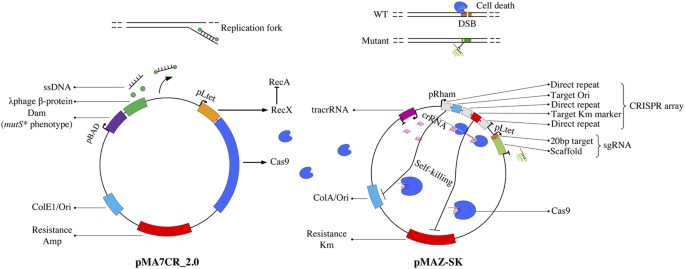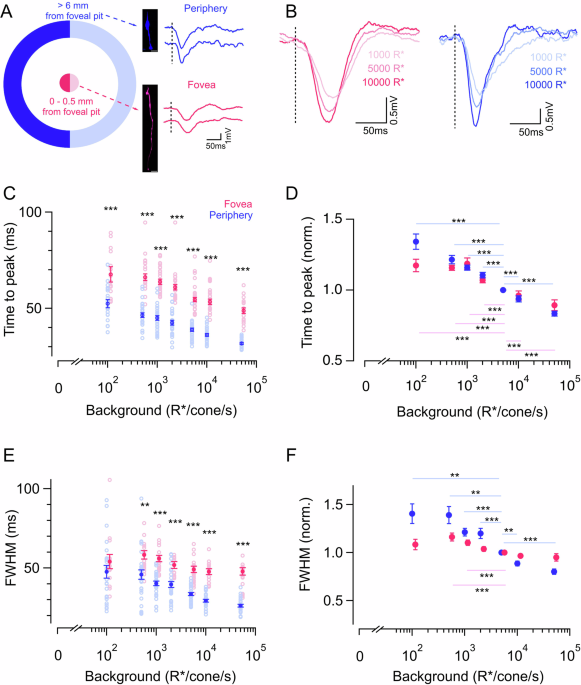- Select a language for the TTS:
- UK English Female
- UK English Male
- US English Female
- US English Male
- Australian Female
- Australian Male
- Language selected: (auto detect) - EN
Play all audios:
ABSTRACT Gorlin (or nevoid basal cell carcinoma) syndrome is characterized by a variety of clinical problems including generalized overgrowth of the body, cysts, developmental abnormalities
of the skeleton and a predisposition to benign and malignant tumors1,2. The syndrome results from germline mutations of the human homolog of the drosophila segment polarity gene patched
(_ptc_)3,4. Here we report that mice heterozygous for ptc develop many of the features characteristic of Corlin syndrome and that they exhibit a high incidence of rhabdomyosarcomas (RMS),
the most common soft-tissue sarcoma in children5. The downstream signalling partner of _ptc, glil_, was overexpressed in all RMSs analyzed, indicating that abnormal signalling of the
_ptc-glil_ pathway may be common for the various tumors6,7 associated with the syndrome. _igf2_, implicated in the formation of RMSs8, was also overexpressed, suggesting cross-talk between
the _ptc_ and _igf2_ pathways in tumorigenesis. Developemental defects in Corlin syndrome resemble those induced by ionizing radiation9. We show that ptc heterozygous mice exhibit increased
incidence of radiation-induced teratogenesis. This suggests a role for _ptc_ in the response to ionizing radiation and provides a model for both the systemic (developmental) and stochastic
(cancer) abnormalities observed in Gorlin syndrome. Access through your institution Buy or subscribe This is a preview of subscription content, access via your institution ACCESS OPTIONS
Access through your institution Subscribe to this journal Receive 12 print issues and online access $209.00 per year only $17.42 per issue Learn more Buy this article * Purchase on
SpringerLink * Instant access to full article PDF Buy now Prices may be subject to local taxes which are calculated during checkout ADDITIONAL ACCESS OPTIONS: * Log in * Learn about
institutional subscriptions * Read our FAQs * Contact customer support SIMILAR CONTENT BEING VIEWED BY OTHERS CHARACTERIZATION OF A RHABDOMYOSARCOMA REVEALS A CRITICAL ROLE FOR SMG7 IN
CANCER CELL VIABILITY AND TUMOR GROWTH Article Open access 22 June 2023 HAPLOINSUFFICIENCY OF THE LYSOSOMAL SIALIDASE _NEU1_ RESULTS IN A MODEL OF PLEOMORPHIC RHABDOMYOSARCOMA IN MICE
Article Open access 20 September 2022 SYNTHETIC ESSENTIALITY BETWEEN PTEN AND CORE DEPENDENCY FACTOR PAX7 DICTATES RHABDOMYOSARCOMA IDENTITY Article Open access 17 September 2021 REFERENCES
* Bal, A.E. Variable expressivity of patched mutations in flies and humans. _Am. J. Hum. Genet._ 60, 10–12 (1997). Google Scholar * Gorlin, R.J. Nevoid basal-cell carcinoma syndrome.
_Medicine (Baltimore)_ 66, 98–113 (1987). Article CAS Google Scholar * Hahn, H. _et al_. Mutations of the human homolog of Drosophila patched in the nevoid basal cell carcinoma syndrome.
_Cell_ 85, 841–851 (1996). Article CAS Google Scholar * Johnson, R.L. _et al_. Human homolog of patched, a candidate gene for the basal cell nevus syndrome. _Science_ 272, 1668–1671
(1996). Article CAS Google Scholar * Pappo, A.S., Shapiro, D.N. & Crist, W.M. Rhabdomyosarcoma. Biology and treatment. _Pediatr. Clin. North. Am._ 44, 953–972 (1997). Article CAS
Google Scholar * Goodrich, L.V., Milenkovic, L., Higgins, K.M. & Scott, M.P. Altered neural cell fates and medulloblastoma in mouse patched mutants. _Science_ 277, 1109–1113 (1997).
Article CAS Google Scholar * Dahmane, N. _et al_. Activation of the transcription factor Gli1 and the Sonic hedgehog signalling pathway in skin tumours. _Nature_ 389, 876–881 (1997).
Article CAS Google Scholar * Zhan, S. _et al_. Concordant loss of imprinting of the human insulin-like growth factor II gene promoters in cancer. _J. Biol. Chem._ 270, 27983–27986 (1995).
Article CAS Google Scholar * Hall, E.J. Effects of radiation on the embryo and fetus. In: _Radiobiology for the radiologist_ (J.B. Lippincott Company,–Philadelphia, 1994). Google Scholar
* Cossu, G., Tajbakhsh, S. & Buckingham, M. How is myogenesis initiated in the embryo? _Trends Genet._ 12, 218–23 (1996). Article CAS Google Scholar * Hynes, M. _et al_. Control of
cell pattern in the neural tube by the zinc finger transcription factor and oncogene Gli-1. _Neuron_ 19, 15–26 (1997). Article CAS Google Scholar * Albrecht, S. _et al_. Variable
imprinting of H19 and IGF2 in fetal cerebellum and medulloblastoma. _J. Neuropathol. Exp. Neurol._ 55, 1270–1276 (1996). Article CAS Google Scholar * Sun, F.L., Dean, W.L., Kelsey, G.,
Allen, N.D. & Reik, W. Transactivation of Igf2 in a mouse model of Beckwith-Wiedemann syndrome. _Nature_ 389, 809–815 (1997). Article CAS Google Scholar * Shapiro, D.N., Sublett,
J.E., Li, B., Downing, J.R. & Naeve, C.W. Fusion of PAX3 to a member of the forkhead family of transcription factors in human alveolar rhabdomyosarcoma. _Cancer Res._ 53, 5108–5112
(1993). PubMed CAS Google Scholar * Rugh, R. _The mouse: its reproduction and development_ (Oxford University Press, New-York, 1990). Google Scholar * Goodrich, L.V., Johnson, R.L.,
Milenkovic, L., McMahon, J.A. & Scott, M.P. Conservation of the hedgehog/patched signaling pathway from flies to mice: induction of a mouse patched gene by Hedgehog. _Genes Dev._ 10,
301–312 (1996). Article CAS Google Scholar * Levanat, S. _et al_. A two-hit model for developmental defects in Gorlin syndrome. _Nature Genet._ 12, 85–87 (1996). Article CAS Google
Scholar * Arlett, C.F. & Priestley, A. Deficient recovery from potentially lethal damage in some gamma-irradiated human fibroblast cell strains. _Br. J. Cancer Suppl._ 6, 227–232
(1984). PubMed PubMed Central CAS Google Scholar * Featherstone, T., Taylor, A.M. & Harnden, D.G. Studies on the radiosensitivity of cells from patients with basal cell naevus
syndrome. _Am. J. Hum. Genet._ 35, 58–66 (1983). PubMed PubMed Central CAS Google Scholar * Waldman, T. _et al_. Cell-cycle arrest versus cell death in cancer therapy. _Nature Med._ 3,
1034–1046 (1997). Article CAS Google Scholar Download references AUTHOR INFORMATION AUTHORS AND AFFILIATIONS * Section on Genetics, National Institute of Mental Health, 36 Convent Drive,
Room 3006, Bethesda, MD, 20892, USA Heidi Hahn, Leszek Wojnowski, Anne M. Zimmer, Jennifer Hall & Andreas Zimmer * Veterinary Resources Program, National Institute for Research
Resources; National Institutes of Health, Building 28A, Room 117, Bethesda, MD, 20892, USA Georgina Miller Authors * Heidi Hahn View author publications You can also search for this author
inPubMed Google Scholar * Leszek Wojnowski View author publications You can also search for this author inPubMed Google Scholar * Anne M. Zimmer View author publications You can also search
for this author inPubMed Google Scholar * Jennifer Hall View author publications You can also search for this author inPubMed Google Scholar * Georgina Miller View author publications You
can also search for this author inPubMed Google Scholar * Andreas Zimmer View author publications You can also search for this author inPubMed Google Scholar RIGHTS AND PERMISSIONS Reprints
and permissions ABOUT THIS ARTICLE CITE THIS ARTICLE Hahn, H., Wojnowski, L., Zimmer, A. _et al._ Rhabdomyosarcomas and radiation hypersensitivity in a mouse model of Gorlin syndrome. _Nat
Med_ 4, 619–622 (1998). https://doi.org/10.1038/nm0598-619 Download citation * Received: 27 February 1998 * Accepted: 23 March 1998 * Issue Date: 01 May 1998 * DOI:
https://doi.org/10.1038/nm0598-619 SHARE THIS ARTICLE Anyone you share the following link with will be able to read this content: Get shareable link Sorry, a shareable link is not currently
available for this article. Copy to clipboard Provided by the Springer Nature SharedIt content-sharing initiative








